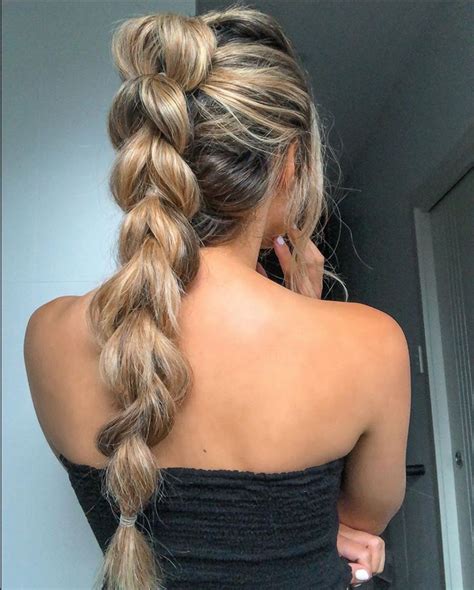Introduction
With the vast array of hair colors available, finding the perfect hue can be overwhelming. From subtle highlights to bold statement shades, our comprehensive guide will empower you to make an informed decision. Explore 100+ mesmerizing swatches, decode the color codes, and discover the latest trends.

Understanding Hair Color Basics
Levels & Tones
Hair color is defined by two components: level (lightness/darkness) and tone (warmth/coolness). Levels range from 1 (black) to 10 (platinum blonde), while tones include neutral, warm (red/orange undertones), and cool (blue/green undertones).
Numbers
Hair color swatches often use a numbering system to indicate level and tone. The first number represents the level, followed by a decimal point and the tone. For example, 7.3 indicates a medium blonde with golden brown undertones.
100+ Hair Color Swatches
Natural Shades
- 1 (Blackest Black): Rich, deep black for a striking and mysterious look.
- 2 (Raven Black): A slightly lighter black with a subtle hint of brown, adding depth and dimension.
- 3 (Darkest Brown): A rich, chocolatey brown that’s perfect for creating a sleek and sophisticated style.
- 4 (Dark Brown): A warm, natural brown with a hint of red undertones, adding warmth to your look.
- 5 (Medium Brown): A versatile brown that complements a wide range of skin tones and eye colors.
- 6 (Light Brown): A soft, golden brown that adds warmth and brightness to your hair.
- 7 (Dark Blonde): A rich, warm blonde with a touch of honey undertones, enhancing your hair’s natural glow.
- 8 (Medium Blonde): A natural, sandy blonde that’s perfect for those who want a sun-kissed look.
- 9 (Light Blonde): A bright, summery blonde that adds instant radiance to your hair.
- 10 (Platinum Blonde): The lightest blonde shade, perfect for a daring and glamorous look.
Fashion Shades
- Red: From fiery copper to deep burgundy, red hues add warmth and a pop of color to your hair.
- Orange: A vibrant and playful shade that complements cool skin tones.
- Yellow: A bright and sunny color that’s perfect for adding a touch of cheer to your look.
- Green: From emerald green to minty pastels, green shades add a touch of whimsy and originality.
- Blue: From deep navy to icy turquoise, blue shades create a captivating and ethereal look.
- Purple: A vibrant and mysterious shade that adds a touch of drama to your hair.
- Pink: A soft and feminine shade that adds a pop of color and a touch of whimsy.
Choosing the Right Hair Color
Consider Your Skin Tone
- Cool skin tones: Blues, greens, purples, and ashy blacks and blondes.
- Warm skin tones: Reds, oranges, yellows, and golden blacks and blondes.
- Neutral skin tones: Most shades will complement this skin tone.
Consider Your Hair Texture
- Fine hair: Lighter shades will add volume and thickness.
- Thick hair: Darker shades will help to create a sleek and polished look.
Consider Your Lifestyle
- High-maintenance: Fashion shades require frequent touch-ups.
- Low-maintenance: Natural shades require less upkeep.
Common Mistakes to Avoid
- Going too dark or light: Choose a shade close to your natural hair color to avoid a drastic change.
- Choosing a color that doesn’t suit your skin tone: Consider the undertones of your skin and hair to avoid clashing colors.
- Over-bleaching: Bleaching can damage your hair, so always consult a professional for bleach treatments.
- Ignoring maintenance: All hair colors require some level of maintenance, so be prepared for regular touch-ups and conditioning.
Pros and Cons of Different Hair Colors
Natural Shades
- Pros: Natural, flattering, less maintenance.
- Cons: May lack excitement or boldness.
Fashion Shades
- Pros: Adds color and personality, makes a statement.
- Cons: Requires frequent upkeep, can be damaging to hair.
Conclusion
With our comprehensive guide, you’re now equipped to make an informed decision about your hair color. Remember to consider your skin tone, hair texture, and lifestyle before choosing a shade. By following our tips and exploring our swatches, you’ll find the perfect hair color to express your style and enhance your natural beauty.
Informative Tables
Table 1: Hair Color Levels and Tones
| Level | Tone | Description |
|---|---|---|
| 1 | Neutral | Pure black |
| 2 | Neutral | Raven black with subtle brown undertones |
| 3 | Warm | Dark brown with red undertones |
| 4 | Neutral | Dark brown |
| 5 | Neutral | Medium brown |
| 6 | Warm | Light brown with golden undertones |
| 7 | Warm | Dark blonde with honey undertones |
| 8 | Neutral | Medium blonde |
| 9 | Neutral | Light blonde |
| 10 | Neutral | Platinum blonde |
Table 2: Hair Color Shades for Different Skin Tones
| Skin Tone | Recommended Shades |
|---|---|
| Cool | Blues, greens, purples, ashy blacks and blondes |
| Warm | Reds, oranges, yellows, golden blacks and blondes |
| Neutral | Most shades |
Table 3: Hair Color Swatches
| Level | Tone | Description | Image |
|---|---|---|---|
| 1 | Neutral | Blackest black | |
| 2 | Neutral | Raven black | |
| 3 | Warm | Darkest brown with red undertones | |
| 4 | Neutral | Dark brown | |
| 5 | Neutral | Medium brown | |
| 6 | Warm | Light brown with golden undertones | |
| 7 | Warm | Dark blonde with honey undertones | |
| 8 | Neutral | Medium blonde | |
| 9 | Neutral | Light blonde | |
| 10 | Neutral | Platinum blonde |
Table 4: Hair Color Maintenance Tips
| Hair Color | Maintenance Tips |
|---|---|
| Natural shades | Regular trims, touch-ups as needed |
| Fashion shades | Frequent touch-ups, conditioning treatments |
| Bleached hair | Avoid heat styling, use color-safe hair products |
